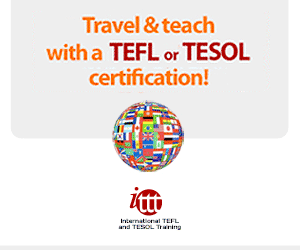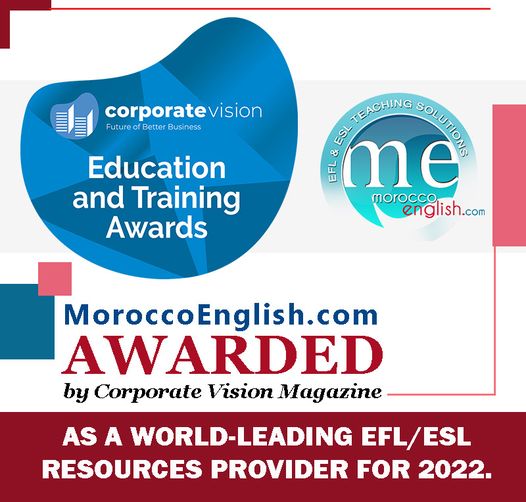 Over the last two decades, the issue of learner autonomy has gained much importance in the field of applied linguistics and has raised a great debate among educators. The concept of learner autonomy has even become a 'buzz-word' within the context of language learning (Little, 1991: 2). Indeed, Holec, who is considered as the "father" of learner autonomy, was the first to introduce it in 1981. Many definitions have since been given to the term, depending on the writer as well as the context. Nevertheless, there is an agreement on the fact that learner autonomy is the ability to take charge of one’s own learning. Besides, the main idea behind learner autonomy is that students take responsibility for their own learning, rather than be dependent on the teacher (Holec, 1981). Benson agrees with Holec and points out that the autonomous learner is the one who constructs knowledge from direct experience, rather than the one who responds to someone’s instruction (Benson & Voller, 1997:18). The present essay is devoted to learner autonomy and language learning theories in the first part. The second part deals with the characteristics of the autonomous learner. Finally, the third part discusses the strategies and conditions of learner autonomy.
Over the last two decades, the issue of learner autonomy has gained much importance in the field of applied linguistics and has raised a great debate among educators. The concept of learner autonomy has even become a 'buzz-word' within the context of language learning (Little, 1991: 2). Indeed, Holec, who is considered as the "father" of learner autonomy, was the first to introduce it in 1981. Many definitions have since been given to the term, depending on the writer as well as the context. Nevertheless, there is an agreement on the fact that learner autonomy is the ability to take charge of one’s own learning. Besides, the main idea behind learner autonomy is that students take responsibility for their own learning, rather than be dependent on the teacher (Holec, 1981). Benson agrees with Holec and points out that the autonomous learner is the one who constructs knowledge from direct experience, rather than the one who responds to someone’s instruction (Benson & Voller, 1997:18). The present essay is devoted to learner autonomy and language learning theories in the first part. The second part deals with the characteristics of the autonomous learner. Finally, the third part discusses the strategies and conditions of learner autonomy.
Learner autonomy and language learning theories
There are three dominant approaches to knowledge and learning that are related to learner autonomy. One of them is Positivism, which is built upon the assumption that learning can only consist in the transmission of knowledge from one individual to another' (Benson & Voller, 1997: 20). Indeed, this view undoubtedly revolves around the maintenance of the "traditional classroom," where teachers transmit knowledge to learners who receive it passively. Anyways, positivism is against the development of learner autonomy, as the latter calls for separating learning from the traditional conventions and associates it with self-direction and self-evaluation (ibid).
Another approach is Constructivismn, which is strongly associated with Halliday (1979, cited in Benson & Voller, 1997: 21). In contrast to positivism, constructivism maintains the view that rather than discovering objective knowledge, individuals reorganize and restructure their own experience. In Candy's (Candy, 1991: 270) terms, constructivism 'leads directly to the proposition that knowledge cannot be taught but only learned (that is, constructed)', because knowledge is something 'built up by the learner' (Glasersfeld & Smock, 1974:16, cited in Candy). Besides, language learning does not only involve sets of rules, but each learner is said to express his own experience and view of the world in the target language. That is how constructivism advocates psychological versions of autonomy that are related to learners' behaviour, attitudes, motivation, and self-concept (Benson & Voller, 1997: 23). Consequently, this approach promotes self-directed learning as a necessary condition for learner autonomy.
The last but not least theory is the critical one, which shares with constructivism the view that knowledge is constructed rather than learned. Moreover, it is a theory that argues that knowledge does not reflect reality, but rather comprises 'competing ideological versions of that reality expressing the interests of different social groups' (Benson & Voller, 1997: 22). Within this approach, learning concerns are perceived as a process within which learners interact with social context. More than that, linguistic forms are based on the social meanings that they convey, which are mainly about language and power. In other words, learner autonomy assumes a more social and political character within critical theory. In fact, as far as language learners become aware of the social context of their learning, they gradually become independent, get rid of myths and stereotypes, and can be thought of as 'authors of their own worlds' (ibid: 53). Therefore, positivism, constructivism, and the critical theory are three theories having different views on learner autonomy.
Characteristics of an autonomous learner
In order to understand what learner autonomy really means, one has to investigate the way learners can be autonomous and gain insight into the characteristics of an autonomous learner. Accordingly, Aloumpis (2005) states that
I believe that a good autonomous learner must have very good planning skills in order to plan time for reading and research. I also believe that he/she should be able to prioritize and be to the learning process. Autonomous learning also allows the learner to direct his reading and research towards subjects that he/she feels need improvement.”
Indeed, in the light of this quote, one can deduce that the main characteristics of an autonomous learner are based on being devoted to learning and planning to read and make research, especially about the subjects in which he/she lacks proficiency. More than that, Dickinson (1993) believes that autonomous learners are the ones who are able to understand their lessons and at the same time to formulate their learning objectives. She also maintains that autonomous learners are capable of selecting appropriate learning strategies and making use of them. They are able to self-access, to assess their use of different strategies, and to evaluate their own learning (330-31). That is how Dickinson identifies some of the characteristics of autonomous learners.
Accordingly, an autonomous learner is perceived as the one who explicitly assumes the responsibility of his own learning (Little, 1991). The autonomous learner shows initiative regarding learning and evaluates the extent to which learning is achieved (Schunk, 2005). Besides, the development of learner autonomy depends on the reflectivity and the self-awareness of formal educational contexts that help in producing better learning (Pintrich, 2000). These are the characteristics of an autonomous learner; however, a particular learner cannot achieve these characteristics, if he is not aware of the appropriate conditions and strategies that his autonomy is in need of.
Conditions and strategies of Learner autonomy
Autonomous learning is achieved when certain strategies are followed. Indeed, Learning strategies are defined as ‘mental steps or operations that learners use to learn a new language and to regulate their efforts to do so’ (Wenden 1998: 18). On the one hand, O'Malley and Chamot (1990: 44), define cognitive strategies as the ones that 'operate directly on incoming information, manipulating it in ways that enhance learning'. According to them, these strategies are repetition, resourcing, translation, note-taking, deduction, contextualization, and others. On the other hand, Cook points out that ‘metacognitive strategies are skills used for planning, monitoring, and evaluating the learning activity; they are strategies about learning rather than learning strategies themselves’ (1993: 114). So, metacognitive strategies are about directed attention, selective attention, self-monitoring, self-evaluation, and self-reinforcement (ibid). These are the strategies of learner autonomy; however, they are not enough since learners do not need only strategies to achieve their goals.
Indeed, learner autonomy needs also suitable conditions since the success of a learning activity is related to learners' attitudes toward the world, to the learning activity in particular, to their sense of self, and to their desire to learn (Benson & Voller: 134-136). That is to say that language learning depends also an affective component, which is motivation. In this respect, Gardner and MacIntyre (1993: 1) define 'affective variables' as the 'emotionally relevant characteristics of the individual that influence how she/he will respond to any situation'. (as cited in Graham, 1997: 92) Moreover, among the social and affective variables, self-esteem and desire to learn are regarded to be the most crucial factors 'in the learner's ability to overcome occasional setbacks or minor mistakes in the process of learning a second [or foreign] language' (Tarone & Yule, 1989: 139). According to Gardner and MacIntyre (3), motivation is comprised of three components: 'desire to achieve a goal, effort extended in this direction, and satisfaction with the task'.
The achievement of learner autonomy depends also on learners’ attitudes toward language learning. Accordingly, Wenden (1998: 52) defines attitudes as 'learned motivations, valued beliefs, evaluations, what one believes is acceptable, or responses oriented towards approaching or avoiding'. In her point of view, two kinds of attitudes are crucial: attitudes learners hold about their role in the learning process, and their capability as learners (ibid: 53). Additionally, attitudes are 'part of one's perception of self, of others, and of the culture in which one is living or the culture of the target language' (Brown, 1987: 126), and it seems clear that positive attitudes contribute in increasing the learner’s motivation, while negative attitudes have the opposite effect. More than that, in order to achieve autonomy, it is also important to make sure that there is a teacher who can guide to a successful autonomy.
In fact, Voller states that “teachers in autonomy-centred classes are seen as facilitators, counselors and resources” (Voller, 1997). Facilitation involves a large number of roles that are both psycho-social and technical including motivating, raising awareness, helping to plan as well as to evaluate and acquire needed skills. As for the counseling function, it involves consultation and guidance of learners’ autonomy. Concerning the role of resourcing, teachers are said to provide learners with information and data. This confirms that tough autonomous learners should take responsibility for their own learning, they still need their teachers’ guidance. However, it has also been stressed that learner autonomy and teacher autonomy are interdependent, and that teachers wishing to promote greater learner autonomy need to "start with themselves", reflecting on their own beliefs, practices, and experiences (Little, 1995; Smith, 2000).
All in all, learner autonomy is all about how learners get to learn languages independently, which is quite valuable within the process of learning. In fact, learner autonomy improves learner’s academic level and develops their potential. It also helps them in promoting a healthy mentality, enhancing their attention, and improving their critical thinking (Little 1991; Holec 1981; Dickinson 1987). Besides, learner autonomy makes learners develop their own learning styles and adopt different learning strategies (Reid, 1987). Not only that, but above all, learner autonomy makes it easier for language learners to learn how to be self-reliant, self-encouraged, and increases their learning interests (ibid). Therefore, as learner autonomy is necessary for language learners to implement it while learning a language through cognitive and metacognitive strategies. Nevertheless, there is an agreement on the fact that the help of the teacher is important too since he/she is the one who can guide and assess learner autonomy to achieve a successful and efficient learning.
References
Benson, P. & Voller, P. 1997. Autonomy and Independence in Language Learning. London:
Longman.
Brown, H. D. 1987. Principles of Language Learning and Teaching. Englewood Cliffs, JC:
Prentice Hall.
Candy, 1991. Self-direction for Lifelong Learning. California: Jossey-Bass.
Cook, V. 1993. Linguistics and Second Language Acquisition. London: Macmillan.
Dickinson, L. (1987). Self-Instruction in Language Learning. Cambridge: Cambridge
University Press.
Gardner, R. C. and MacIntyre, P. D. 1993. A Student's Contributions to Second-language
Learning. Part II: Affective variables. Language Teaching 26, 1-11
Graham, S. 1997. Effective Language Learning. Great Britain: WBC.
Holec, H. 1981. Autonomy in Foreign Language Learning. Oxford: OUP.
Little, D. (1995). Learning as dialogue: The dependence of learner autonomy on
teacher autonomy. System, 23, pp. 175 – 182.
O’Malley, J. M. and Chamot, A. V. 1990. Learning Strategies in Second Language
Acquisition. London: Macmillan.
Pintrich, P. 1994. Classroom and individual differences in early adolescents’ motivation and
self- regulated learning. Journal of Early Adolescence, 14, 139-161 J. (1987). The learning style preferences of ESL students. TESOL Quarterly, 21/1, 87-
111.
Schunk, D. H. 2005. Self-regulated learning: The educational legacy of Paul R. Pintrich.
Educational Psychologist, 40, 85-94.
Smith, R.C. (2000). Starting with ourselves: Teacher-learner autonomy in language learning.
In B. Sinclair, I. McGrath & T. Lamb (Eds.). Learner autonomy,teacher autonomy:
Future directions (pp. 89 – 99). Harlow, UK: Longman.
Tarone, E. and Yule, G. 1989. Focus on the Language Learner. Oxford: OUP.
Thanasoulas, D. 2000. What is learner autonomy and how can it be fostered? Internet TESL
Journal, 6, 1-11.
Voller, P. (1997). Does the teacher have a role in autonomous learning?.
Wenden, A. 1998. Learner Strategies for Learner Autonomy. Great Britain: Prentice Hall.
www.celea.org.cn, Wangtielin Zhangshanshan, Changchun University of Science and
Technology. Retrieved on December 28, 2011.
Suggested readings
Benson, P. (2001) Teaching and Researching Autonomy in Language. Learning London:
Longman.
Dam, L. 1990. Learner Autonomy in Practice. In Gathercole, I. (ed.). 1990, p. 16. CILT.
Great Britain: Bourne Press.
Sheerin, S. 1997. An Exploration of the Relationship between Self-access and Independent
Learning. In Benson, P. and Voller, P. (eds.). 1997. Autonomy and Independence in
Language Learning. London: Longman.
Tumposky, N. 1982. 'The learner on his own'. In M. Geddes and G. Sturtridge (eds.).
Individualisation. London: Modern English Publications







































